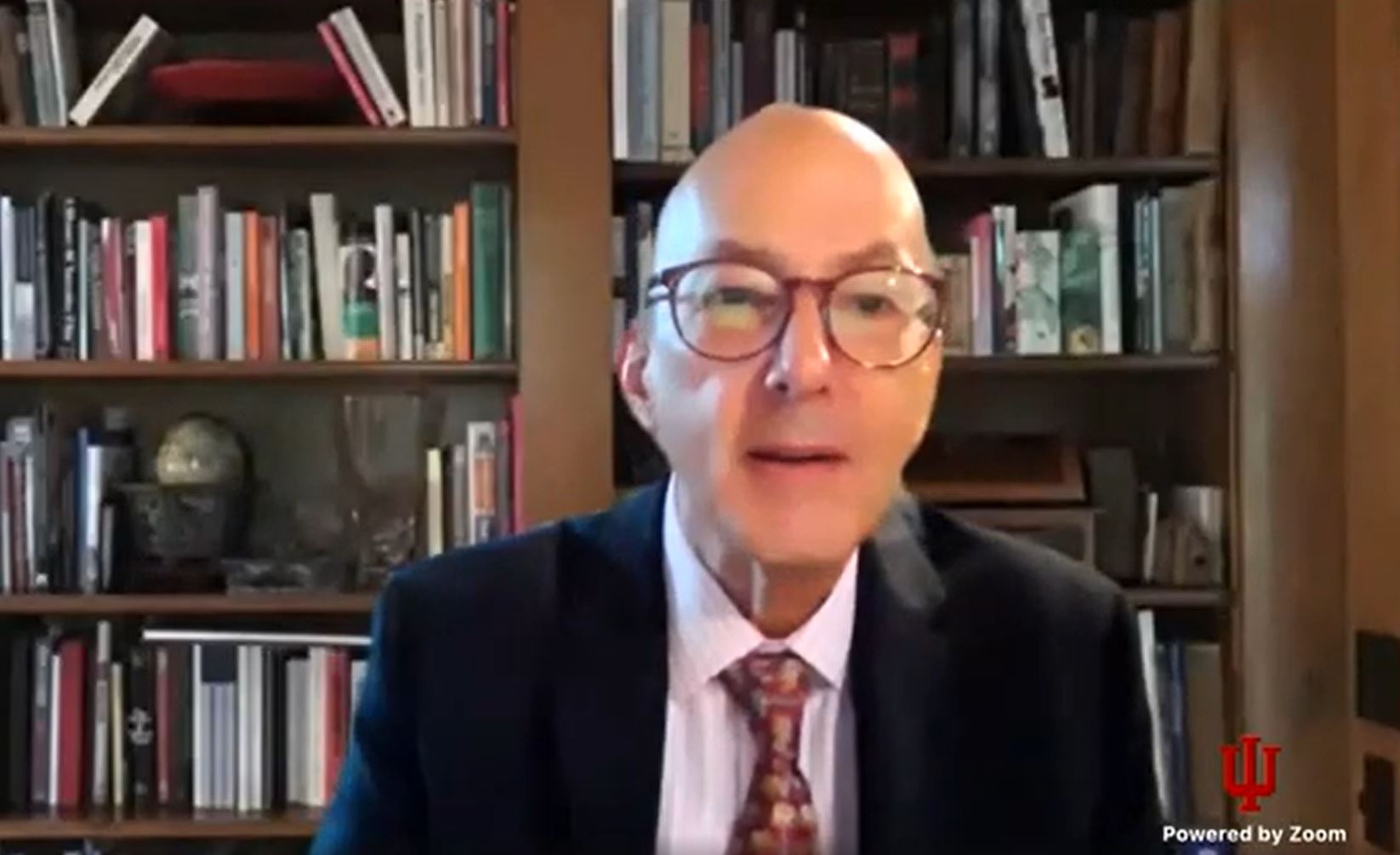When a congressman pressed Roger Glass, MD, PhD, about why the U.S. should invest in global health research when there are so many demands for funds at home, his answer was simple: diarrhea.
Dr. Glass, director of the Fogarty International Center at the National Institutes of Health (NIH), drew on one of his early career experiences working in Bangladesh to explain to the congressman that oral rehydration solutions, the combination of salt and sugar now used in the U.S. and around the world to save the lives of children with diarrhea, were developed to treat cholera in Bangladesh.
He told the congressman that diarrhea accounted for 12 percent of pediatric hospitalizations in the U.S. and that the treatment was developed for less than $10 M in research in 1968 by two NIH fellows in the Office of Global Health that later became the Fogarty International Center. “This was credited by The Lancet as ‘one of the greatest medical achievements of the 20th Century.’ A gift of science to all,” said Dr. Glass.
“This was my introduction to reciprocal innovation,” he said during the 2021 Reciprocal Innovation International Stakeholders Meeting, hosted by the Indiana CTSI and Indiana University (IU) Center for Global Health. Reciprocal innovation is defined as a bi-directional and iterative exchange of a technology, methodology, or process between at least two countries, one lower- or middle-income country and one high-income country, to address a common health challenge. Global health partners continue to share lessons learned throughout the process to suit the needs and infrastructure of each country.
“New approaches are needed to reach our global partner’s heath goals and many of these will find use at home,” Dr. Glass continued. Dr. Glass shared several other significant examples of reciprocal innovation with the virtual audience as well as praise for the AMPATH partnership in Kenya that IU has helped lead for more than 30 years. Research collaborations such as those developed through the AMPATH Research program between investigators in Kenya, North America and Europe empower the global exchange of ideas and lessons learned and improve health in each partner country.
A chance meeting with Dr. Bill Tierney, one of AMPATH’s longtime leaders, introduced Dr. Glass to AMPATH. He later visited the partnership in Kenya in 2016 with NIH director Francis Collins, MD, PhD. “He was blown away by the people he saw, the programs and the innovation,” said Dr. Glass. “It was so interesting that I went back in 2019 with two of the newest Institute directors at the NIH,” he added.
The Fogarty International Center is the smallest of the 27 institutes at the NIH, but works with all of the other institutes. “Our aim is to address global health challenges through collaborative programs of research and training and to support the NIH mission,” said Dr. Glass. “Eighty-eight percent of our grants from Fogarty are co-funded by the other institutes at NIH.”
“When I first got to NIH (in 2006) there were very few of the institutes that had a real portfolio in global health,” explained Dr. Glass. He convened a meeting with the other institute directions to discuss how they might engage in global health. He recalls Tony Fauci, MD, director of the National Institute of Allergy and Infectious Diseases, advocating for a global perspective and training people for early disease detection everywhere, which helps protect the American public too. While the need for a global perspective in infectious diseases might be obvious, Dr. Glass emphasized that global health innovations improve knowledge of other diseases such as cancer and Alzheimer’s disease as well.
“Cancers are different in different parts of the world. Burkitt lymphoma was a unique cancer to Africa. It was an NIH grant to Denis Burkitt working in Uganda that led to the first link of cancer with a virus (Epstein-Barr),” explained Dr. Glass. Other viruses such as human papilloma virus (HPV) and hepatitis B have subsequently been linked to cancers as well.
Dr. Glass shared examples from Rwanda and Costa Rica where the HPV vaccine has been administered in novel ways to explore if cervical cancer could be eliminated with a high enough vaccination rate and if one dose of the vaccine could be as effective as multiple doses. “Sure enough, with help from NIH and The Gates Foundation they looked and they found evidence that single dose protection by this HPV vaccine was successful,” Dr. Glass said. “This is another way that we could improve care at home and decrease the cost of care and the access to HPV vaccines globally through global health research.”
Research in Colombia involving the family of one woman who migrated from Europe to Colombia in 1746 and brought a specific gene mutation for Alzheimer’s disease that impacted a whole cohort in her community is helping to identify biomarkers for progression of this disease. “This will be helping both them and us,” said Dr. Glass. “It's a way to accelerate our own research.”
Dr. Glass highlighted other examples of shared health challenges using global health innovations, such as mobile health technology, drone delivery and the expanded use of community health workers that have their genesis in low- to middle-income countries but are now improving health in the U.S. and in other places around the globe. “We have to take science where the problems are because the frontiers of science may not be at home,” he said.
Dr. Glass also emphasized the importance of training and mentoring the next generation of investigators. “Many of the research breakthroughs have come from our AIDS international research training programs, and many of those advances from Africa. Fogarty trainees have been involved in almost every major breakthrough. At AMPATH you've had almost a dozen fellows from this program.”
Watch Dr. Glass’ full presentation followed by a panel of global health leaders from Indiana University and AMPATH discussing their research and reciprocal innovation.



